Today’s world is intensely fast-paced and demands a lot from us. Amid this hustle- and bustle it’s impossible to not feel a bit of anxiety creep up on you now and then. Since we are constantly living under a flurry of deadlines, we start to feel overwhelmed when the pressure is too much. However, if you are constantly feeling anxious you may be suffering from anxiety. Anxiety is just one part of the big spectrum. On the other end of the spectrum are panic attacks. A panic attack is an extreme form of anxiety. It is sudden, intense, and acute. The sudden occurrence of a panic attack can leave the individual feeling jarred and unbalanced from within. Let’s understand anxiety vs panic attacks in this article.
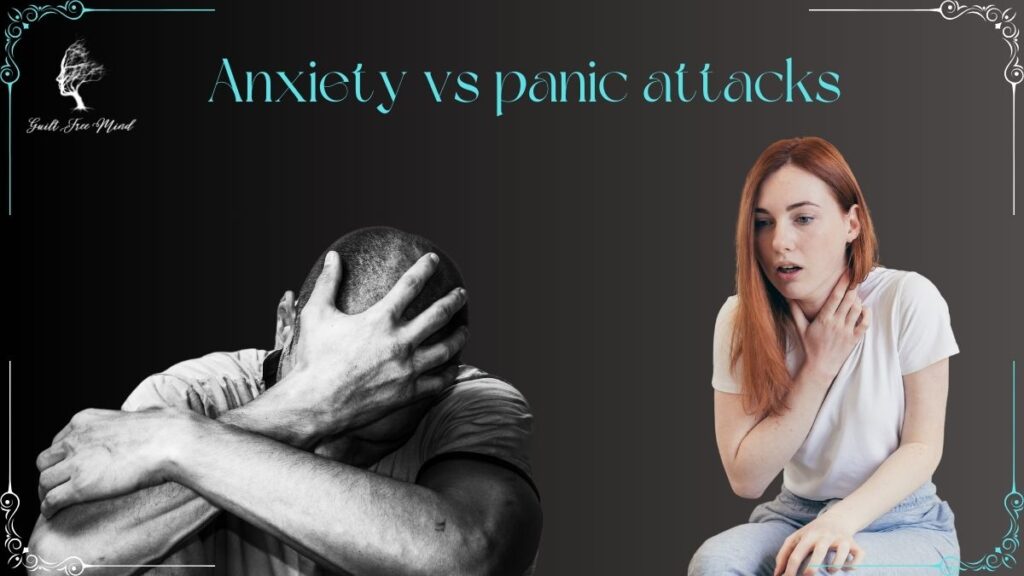
When it comes to anxiety vs panic attacks, it is crucial to understand the difference between the two. This way, if you get overwhelmed, you will know whether you are having an anxiety attack or a panic attack. In this article, I will go over both, and help you achieve a deeper understanding of these two conditions. I will also discuss practical strategies to help you combat the condition.
If you wish to lead a more mindful and positive life, please subscribe to Guilt Free Mind. The subscription option is present in the sidebar. Your subscription will allow me to notify you every time a new blog post releases from Guilt Free Mind. If you like watching videos, subscribe to the YouTube channel of Guilt Free Mind. Do not forget to ring the notification bell so that YouTube notifies you the moment the next video releases.
Table of Contents
Anxiety vs panic attacks
Before I discuss anxiety vs panic attacks in detail, you must understand what these two conditions are. Even though both of these conditions are treatable, anxiety is very different from panic attacks, despite being a part of the anxiety spectrum. Thus, the knowledge of what these disorders are individually is crucial before you try to understand anxiety vs panic attacks.
Anxiety vs Panic attacks: understanding anxiety
Anxiety is one of the most underrated and misunderstood mental health conditions in the current world. It affects millions of people worldwide. At some point in life, we all experience anxiety. Therefore, you must understand the fundamental details of anxiety so that you are better able to grasp anxiety vs panic attacks when it is discussed later in the blog post. In this section, I will explore what is anxiety, the most common causes and triggers that lead to anxiety, the signs, and symptoms it manifests, and how it impacts your daily living.
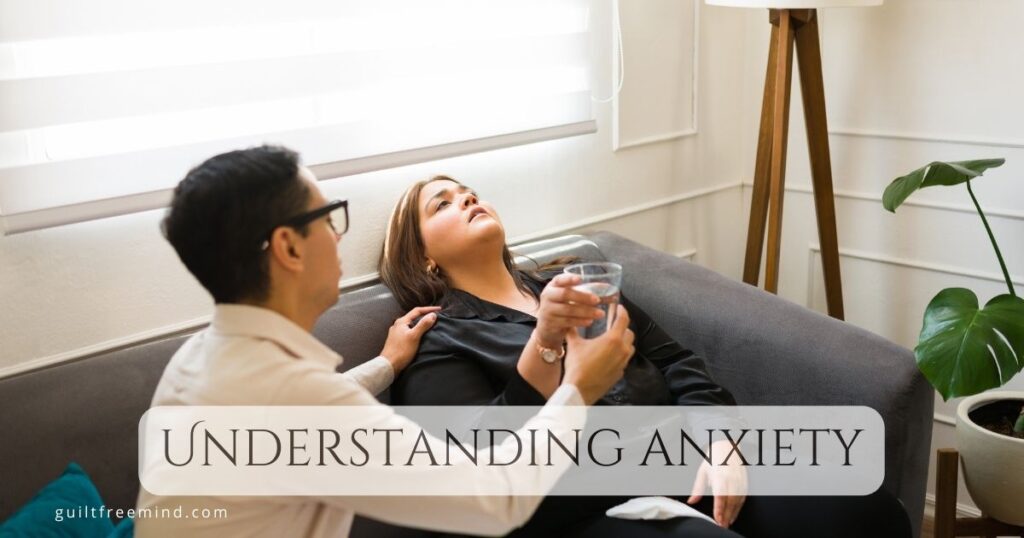
Anxiety
Anxiety is something we all go through from time to time. It is an adaptive and natural response of the human body towards danger, stress, and uncertainty we come across. Most often anxiety is characterized by feelings of apprehension, fear, and unease towards unanticipated events and situations. The occurrence of anxiety from time to time is not a bad thing. It keeps us on our toes and motivates us to take action to achieve the outcome we want. However, if a person is stuck in a constant loop of negative thinking, fear, and apprehension, it can lead to excessive levels of worry which is eventually detrimental to the person’s day-to-day life.
Common causes and triggers
Many factors can trigger anxiety in an individual. These factors can either be internal or internal. The most common causes behind anxiety are brain chemical imbalances, genetic predisposition, past traumas, and high levels of stress in the current environment
The triggers that may lead to anxiety tend to differ depending on the type of person. The triggers can range from stress related to work to problems in relationships, etc.
Symptoms of anxiety.
Anxiety most often manifests itself in physical symptoms like elevated heart rate, muscle tension, sweating, restlessness as well and gastrointestinal upset.
The cognitive symptoms associated with anxiety are racing thoughts, difficulty focusing on the task at hand, and heightened levels of worry.
The emotional symptoms of anxiety include feelings of uneasiness, irritability, unease, and dread that something very bad will happen. Behavioral manifestations of anxiety are avoidance of people, places, or circumstances that may trigger anxiety in the person, or constantly seeking reassurance from others.
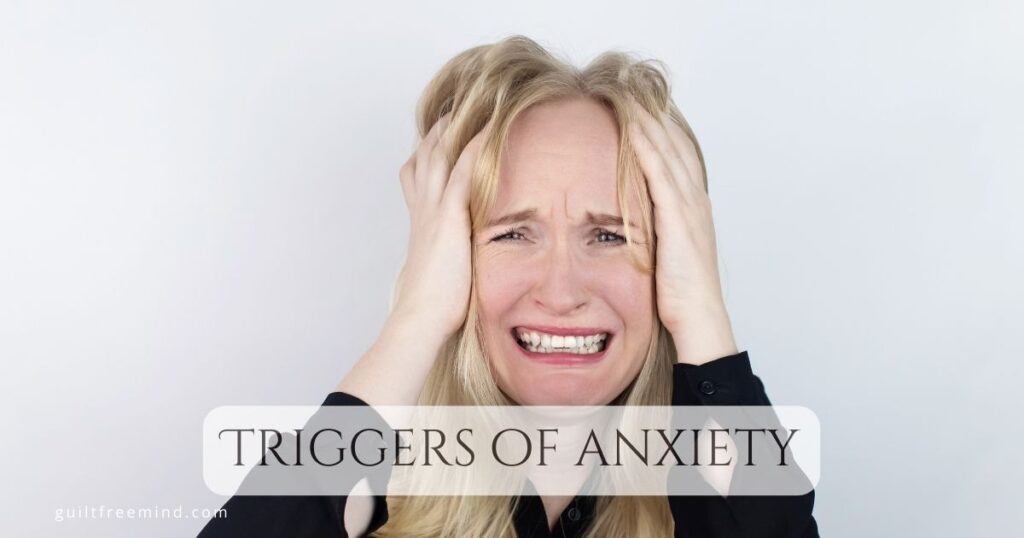
How can anxiety take a toll on your everyday life?
The most profound effect of anxiety is on a person’s ability to focus on their tasks. This makes it very difficult for them to have good relationships, make the right decisions, and work seamlessly.
If a person experiences chronic anxiety, they will also experience physical issues like cardiovascular issues, high blood pressure, and compromised function of the immune system.
Anxiety vs panic attacks – Understanding panic attack :
Panic attacks occur as frightening and intense episodes of anxiety that are very different from normal anxiety. Even though panic attack falls under the anxiety spectrum, it is a far cry from anxiety. Panic attacks can be downright dangerous for the person.
Defining panic attacks
A panic attack is characterized as an intense and sudden surge of discomfort or fear that reaches heightened levels within minutes. Most often, such episodes are triggered
subconsciously is in the absence of any provocation. On the surface, it seems as if there was no trigger for the episode.
Unlike the case of generalized anxiety which involves the presence of constant tension and worry, panic attacks are characterized by severe and acute symptoms which lead to an overwhelming sense of doom.
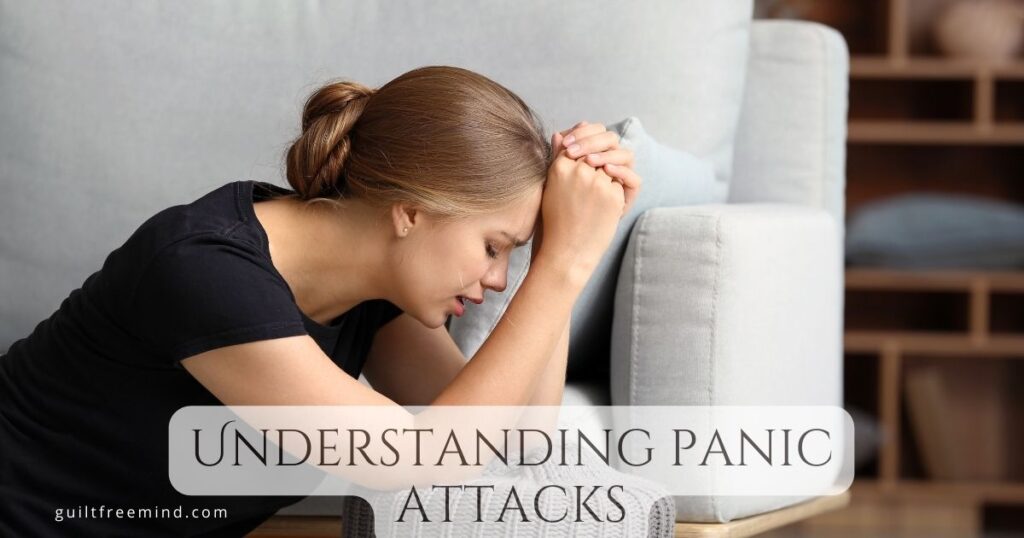
Common triggers and causes
Most often panic attacks are triggered by various factors, even though on the surface it may seem as if there is no reason for the panic attack to take place. Some of the potential triggers in the case of panic attacks are trauma, family history of panic attacks, alterations in the person’s brain chemistry, and finally, last but not least, severe stress.
For many people, panic attack is associated with a specific phobia, situation, or in certain cases, people. In such cases, if such people meet a person who reminds them of their past trauma, or are caught in a phobia situation like at heights, they can experience sudden, extreme fear.
Signs and symptoms of panic attacks
The physical symptoms of a panic attack encompass physical sensations like chest pain, racing heart, rapid breathing, sweating, hyperventilation, and a feeling of choking or being smothered.
The cognitive symptoms associated with panic attacks include feeling afraid that they are losing control, going crazy, or even dying. This is accompanied by the feeling of impending doom.
The emotional symptoms encompass extreme levels of terror, fear, and a desire to run away.
Usually, the person suffering from panic attacks will actively avoid any situation that can provoke the above-mentioned responses in the individual. If stuck in such a situation, such people may even require medical assistance to feel better.
Anxiety vs panic attacks: fundamental differences
There are some fundamental differences between panic attacks and anxiety. First and foremost, panic attack occurrence is extremely sudden. It also peaks in a very short time. In less than 10 minutes, the panic attack reaches its peak levels. On the other hand, anxiety takes longer and it never reaches such intense levels as panic attacks.
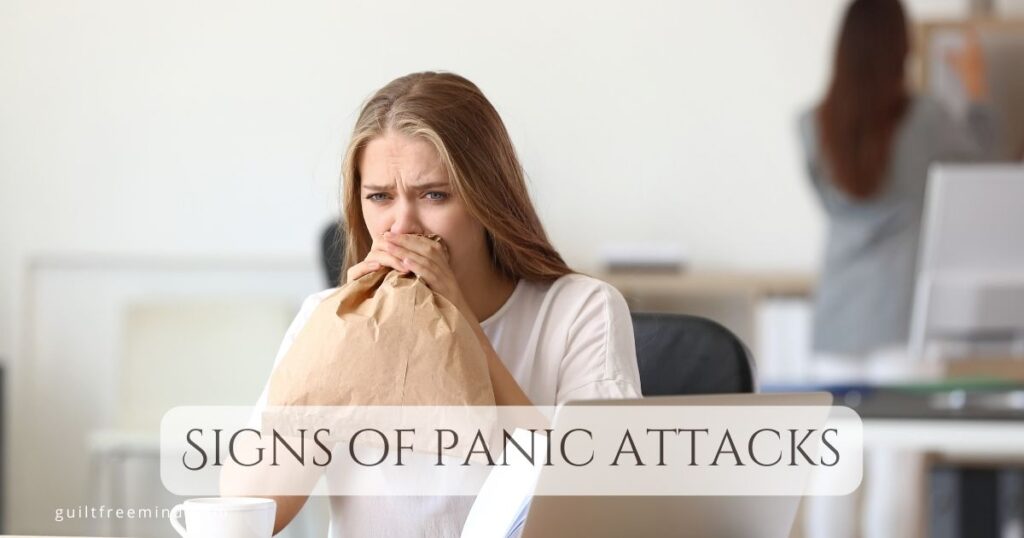
In case of panic attacks, once it reaches intense levels, it subsides slowly leaving the person drained of all their energy. At the end of a panic attack episode, the individual is completely drained, both physically and mentally. It may take them days to start feeling normal again. However, in the case of anxiety, the person starts to feel normal the moment they feel relieved of their anxiety.
Anxiety vs panic attacks: duration and intensity
The two conditions, anxiety and panic attacks differ in their intensity and duration. Anxiety is much more persistent than panic attacks and generally tends to last for months or even years. In the case of anxiety, the person is in a constant state of worry, afraid of the future, uneasy, and in tension. However, the intensity of these symptoms is mild compared to that of panic attacks. Anxiety can be viewed as constantly walking around with a weight on your head.
On the other hand, in the case of a panic attack, the symptoms are much more severe and worse. They also occur in a very short time. Within minutes they will reach their peak levels. Furthermore, those who suffer from panic attacks report that they tend to return in waves of extreme physical discomfort and intense fear.
Anxiety vs panic attacks: commonalities
Certain common symptoms are shared by both ten disorders like feelings of discomfort and fear. However, this does not make them similar in any manner. Anxiety and panic attacks are two very different conditions that need to be understood separately.
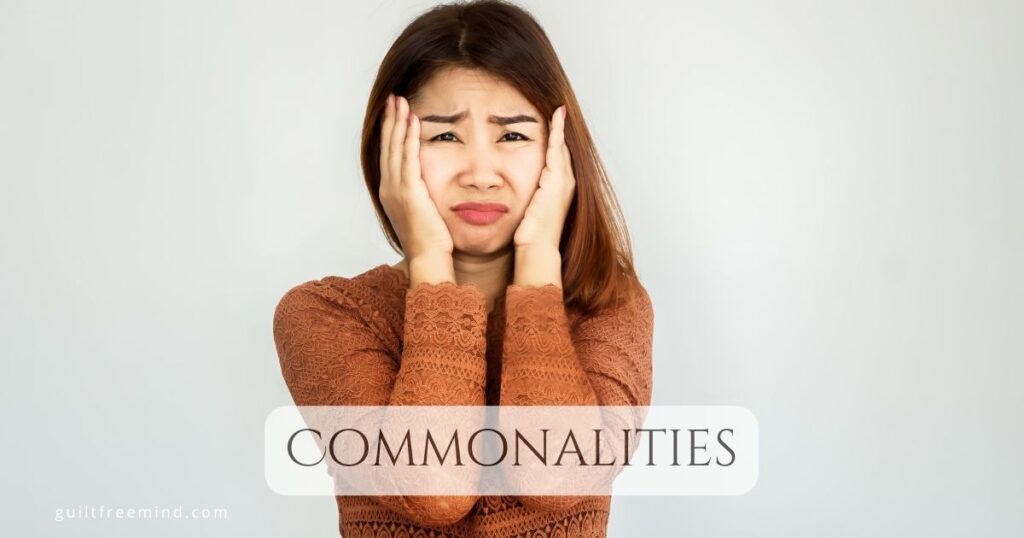
Anxiety vs panic attack: onset and triggers.
In the case of anxiety, the person is most often focused on the future. They are constantly anticipating worse-case scenarios that may occur. Therefore, they experience anticipatory fear. The presence of constant worry makes such people have anxiety. The development process of anxiety is gradual and is almost always an ongoing process.
On the other end of the spectrum, in the case of panic attacks, the onslaught is very sudden and extreme. Panic attacks can occur in varied situations, including those that may or may not produce an anxious response from the person.
Anxiety vs panic attacks: physical symptoms
Now that I have discussed onset, duration, and intensity, let’s focus on the physical symptoms. In the case of anxiety, the physical symptoms tend to be much milder than in the case of panic attacks. The physical sensations that accompany anxiety include restlessness, muscle fatigue, high stomach discomfort, and headaches.
However, panic attacks are characterized as producing a wide array of different symptoms that throw the person completely off-balance. The physical symptoms in case of panic attacks include severe sweating, heart palpitations, chest pain, muscle fatigue, and others.
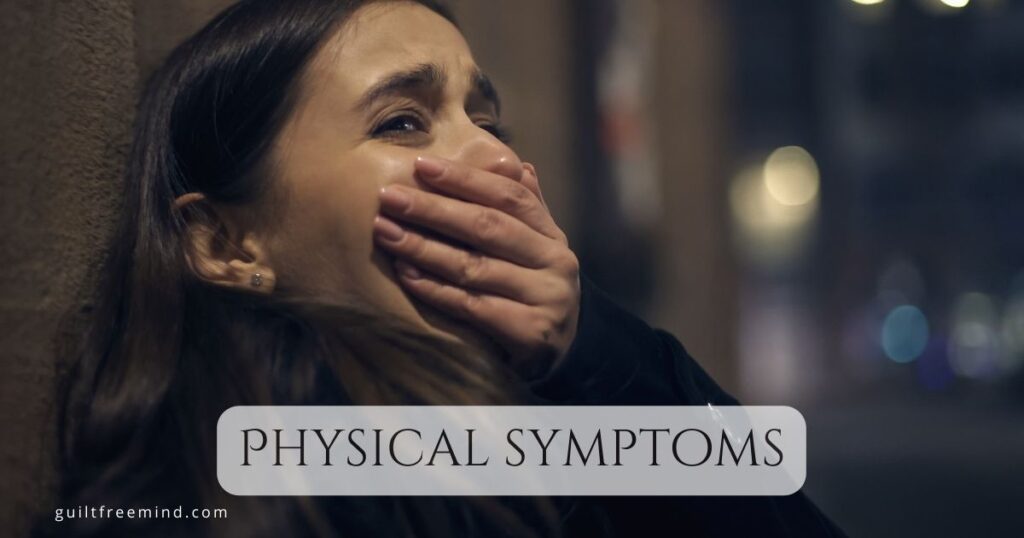
Anxiety vs panic attacks: cognitive and emotional aspects
The primary traits that characterize anxiety are high levels of worry for the future, constant cognitive issues like difficulty concentrating, overthinking, and heightened levels of self-consciousness. As a response to this, the emotional symptoms exhibited by the person are irritability, anger, apprehension, and restlessness.
On the other end of the spectrum, panic attacks are characterized by a high sense of terror, a feeling of dread, and a sensation of losing control. The cognitive symptoms in case of panic attacks are fear of going insane or dying.
Anxiety vs panic attacks: similarities.
Even though anxiety and attacks fall at two separate ends of the anxiety spectrum, there are certain similarities between the two, which is why they are a part of the same spectrum.
Since they are kept on the same spectrum, it causes considerable confusion and at times misdiagnosis of the patient. Therefore, it is crucial to understand where these two mental health conditions converge.
Anxiety vs panic attacks: Overlapping symptoms
Certain symptoms are common between these two mental health conditions. In the case of both panic attacks as well as anxiety, the person experiences intense feelings of discomfort and fear. Even though the duration of the specific triggers differs in these two cases, the emotional experience that the person has of fear is the same. In anxiety, the fear exists for a prolonged period while in the case of a panic attack, the duration of the feeling is shorter. However, in case of panic attacks, the episodes tend to recur. Therefore, the person tends to get stuck in the anticipation of fear.
Certain physical sensations may be common in the case of anxiety vs panic attacks. Some of these physical symptoms experienced by people in both conditions are higher heart rate, severe sweating, muscle tension, intestinal discomfort, shortness of breath, etc. This physical stress can act as a major contributor to the sense of distress in both these mental health conditions.
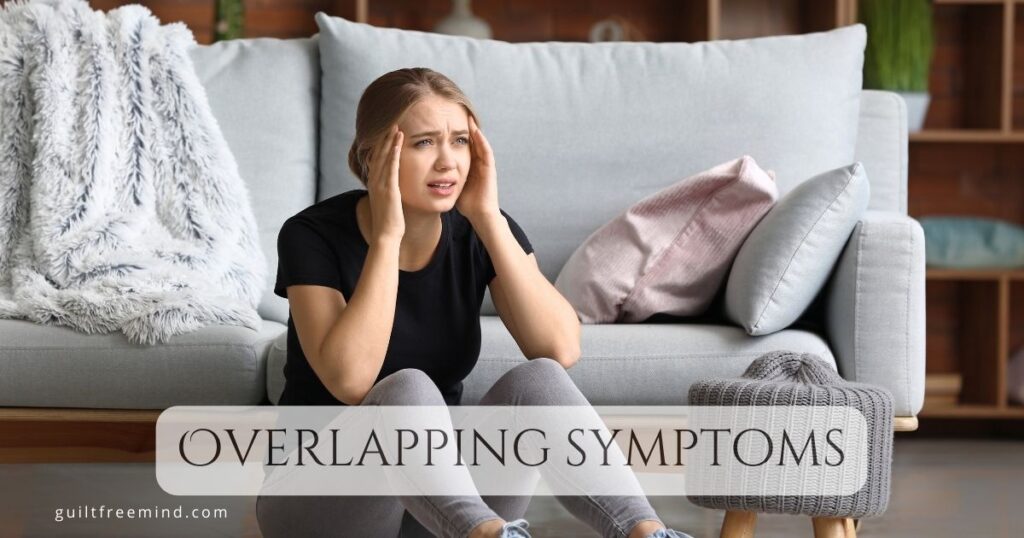
The chance of co-occurrence.
It is not unheard of that a person who suffers from severe anxiety also suffers from panic attacks from time to time. For example, someone who suffers from generalized anxiety disorder may also be affected by panic attacks at times due to the presence of anxiety.
In certain cases, it has also been observed that the existence of anxiety can contribute to the development of panic attacks. Those who suffer from long and severe forms of anxiety can experience a heightened level of stress, which in turn contributes to triggering a panic attack. Once a person has a panic attack, the body becomes more susceptible to having repeated panic attacks and this increases the frequency of panic attack occurrence.
Role of anxiety and stress in the occurrence of panic attack
Even though it seems that panic attacks occur without the presence of external triggers, it has often been observed that there is a base of stress and anxiety that contributes to the occurrence of panic attacks. If a person experiences high levels of stress daily, their chances of having panic attacks increase. In certain cases, panic attacks may also occur as a response to overwhelming levels of anxiety that a person is facing. If anxiety reaches peak levels, it can transition into a panic attack, which is characterized by the presence of severe and acute anxiety symptoms.
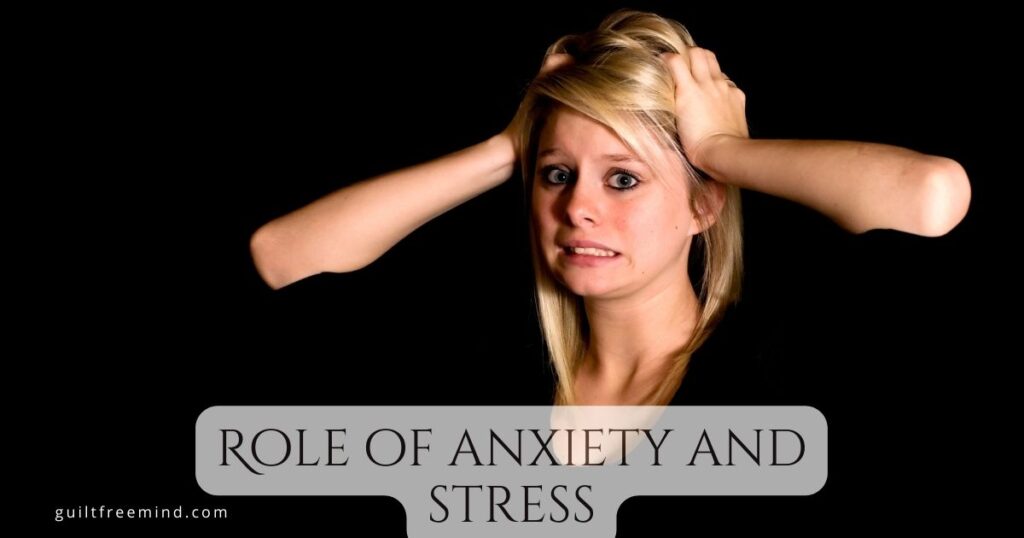
Diagnosis of anxiety vs panic attacks
Anxiety Diagnosis
In the case of anxiety diagnosis, two primary methods are used. One of these is the use of the Diagnostic and Statistical Manual of Mental Disorders (DSM-V). When mental health professionals wish to diagnose anxiety, they refer to the DSM-V manual. This is a very well-recognized mental health manual for the identification and diagnosis of a variety of anxiety disorders like panic disorder, social anxiety disorder, generalized anxiety disorder, and others. The mental health professional may also conduct clinical interviews to understand and assess the patient’s history, daily functioning, and symptoms of anxiety. This is the second method. As a part of the clinical interviews, certain standard questions may also be used based on which the diagnosis is made.
In case of panic attacks too, mental health practitioners refer to the DSM-V. The DSM-V contains the outlining criteria that are used for the diagnosis of panic disorder. This section also covers unexpected and recurrent panic attacks. These criteria can help the mental health practitioner distinguish panic attacks from anxiety. This is of critical importance when understanding anxiety vs panic attacks.
Alternatively, healthcare providers may also use other assessment methods like the panic disorder severity scale (PDSS) to understand the intensity and frequency of panic attacks that the patient is experiencing.
One of the critical steps in managing anxiety or panic attacks is to seek professional guidance. You don’t deserve to live your life constantly afraid of when the next panic attack is going to occur or when you will get that bout of anxiety again. If you’re experiencing the above-mentioned symptoms, please consult a psychologist or a psychiatrist. They can work with you to develop a tailored treatment plan, including medication, therapy, or a combination of both depending on your needs.
Coping strategies for anxiety
Anxiety management requires a combination of therapy, self-help techniques, relaxation methods, and in some cases, even medication. Now that you know how anxiety and attacks are different from one another, let’s look at the coping strategies for each. Here are the coping strategies that can be used to effectively deal with anxiety.

Self-help techniques and lifestyle changes
If you are suffering from anxiety, it is probably born out of stress. Therefore, the primary thing that you should focus on is managing your stress levels. Not everything is in our hands all the time. However, you can work on engaging in stress reduction techniques like muscle relaxation, deep breathing exercises, mindful meditation, taking a walk in nature, engaging in activities that relax you, etc.
Exercise has been known to release stress and reduce anxiety via releasing endorphins in the body. Endorphins tend to improve mood and cause stress reduction. Try and get at least 30 minutes of moderate exercise most days of the week.
If your diet is faulty, it can contribute to increasing anxiety. Focus on having a well-balanced diet daily. Try to involve lean proteins, vegetables, fruits, and whole grains in your everyday meal plan. These will go a long way in contributing to your overall well-being.
Make it a point to stay away from alcohol and excessive caffeine since these can contribute to heightened levels of anxiety.
Prioritise quality sleep
Start on a consistent sleep schedule today and make sure that you are working on good sleep practices. These can help in significantly reducing your anxiety symptoms. Go to sleep at the same time every day and wake up at the same time every day. Try to get in a little bit of sunlight after you wake up.
Limit the amount of stimulants that enter your body like recreational drugs and nicotine. These substances have been observed to increase the levels of anxiety that a person may feel. Always try to stay away from anything that may cause addiction.
Ensure that you have a support system in place on whom you can rely in times of distress. Stay connected to your family, friends, and loved ones. When you hit rock bottom more or if
you are going through a particularly difficult time, these are the people who can provide you with emotional support and reduce your feelings of isolation. They can also help you manage your anxiety levels and feel better.
If you are facing time management issues and if Her stress is a result of improper chain management, then this is a point you should focus on. A proper time management technique can reduce the stress associated with your responsibilities and deadlines. Therefore, you should start working on task prioritization so that you don’t feel overwhelmed at the last minute.
Therapy and counseling options
One of the most common options that are used for anxiety and panic attacks is cognitive behavioral therapy. CBT is an approach that focuses on helping individuals identify their own negative emotions, and then work towards changing those negative emotions into positive ones. In most cases, the therapist will ask the individual to write down what they are feeling, identify the negative emotions, understand the root causes, and work on changing them to positive ones and developing effective coping strategies.

Exposure therapy
Exposure therapy is primarily used if the patient is suffering from phobia or extreme anxiety levels. In this type of therapy, the person is gradually exposed to increasing levels of fear. For example, suppose a person is afraid of crocodiles. The person‘s fear is of a level where seeing a crocodile in a movie causes a panic attack in the person. Exposure therapy will aim to first teach this person relaxation techniques that can be employed when their mind goes into hyperdrive. Once the relaxation techniques are in place, the person will be exposed to increasing levels of fear. The therapist may start with a photograph of a crocodile then move on to movies having a crocodile and then finally ask the person to visit the zoo.
Mindful techniques
There are techniques like mindfulness-based cognitive therapy and mindfulness-based stress reduction techniques that train individuals in how to be more present at the moment and reduce the anxiety that is associated with their future. The reason anxiety persists is because we are always afraid of our future, of the unknown. If you learn to live more in the present, then it will help you in the long term by reducing your anxiety and helping you focus on making your present better.
Medication
Selective serotonin reuptake inhibitors (SSRI) and serotonin non-epinephrine reuptake inhibitors (SNRI) are the most common medications given to those suffering from anxiety. These medications provide short-term relief from intense anxiety symptoms. Benzodiazepines may also be recommended for the same. However, benzodiazepines are not recommended for long-term use since they cause dependency in individuals.
Panic attack coping strategies
In case of a panic attack, the approach is a bit different than those that are involved in case of managing anxiety. Here, the primary aim is to manage the acute and intense symptoms as quickly as possible during a panic attack and reduce the chances of future episodes occurring. Here are the coping strategies that are normally used to deal with panic attacks.
Immediate response towards having a panic attack.
The first step in responding to a panic attack is understanding that what you’re going through is a panic attack. It will not kill you and is not a life-threatening situation. Understanding these factors can reduce the intensity and the hold that the panic attack has on you
The next step is to focus on your breathing. Since people mostly hyperventilate in case of panic attacks, the aim here is to bring your heart rate down and reduce hyperventilation. Therefore, focus on taking slow deep breaths. Inhale till the count of four, hold your breath for another four counts and exhale in the next count of four. This will help you get your heart rate under control.
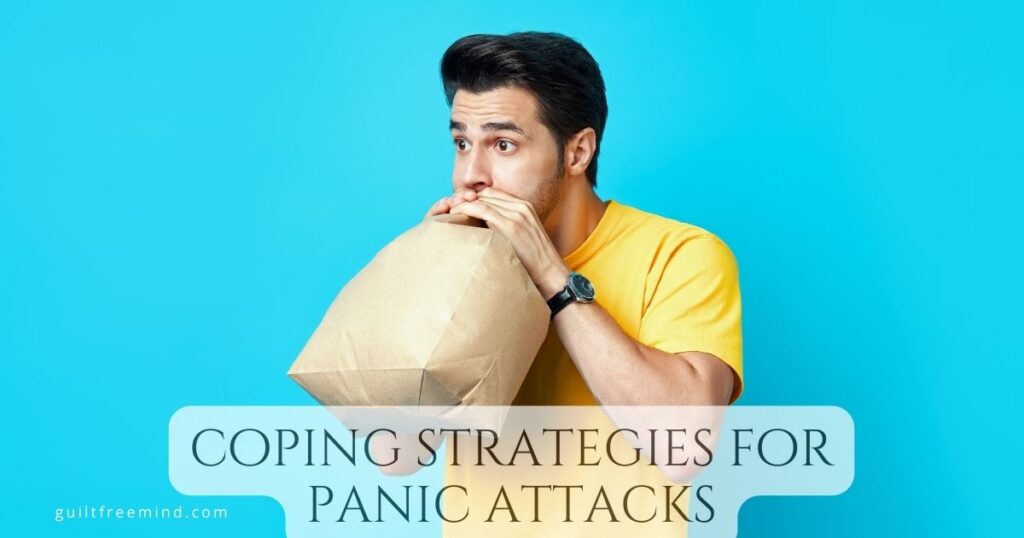
Focus on using grounding objects.
You can either get something from the market that depicts your present moment or you can describe your surroundings. When you realize that you are in the present, you are not stuck in your past, and your future is not here yet, you start to feel stable and more in control.
Remind yourself that the panic attack is a very temporary situation and it will pass soon. Focus on telling yourself, positive affirmations, and happy thoughts, and keeping yourself in your happy place in your mind.
if you are in the throes of a panic attack, find a quiet comfortable place where you can focus on using the relaxation and grounding techniques. Try to be away from people who might make you feel more overwhelmed.
Preventing panic attacks
The first step in preventing panic attacks is to identify the triggers that cause panic attacks. Understanding the patterns can help you avoid the situation that leads to panic attacks. Focus on developing a healthy lifestyle that involves a balanced diet, proper sleep, and regular exercise to reduce the physical stress on your body. As mentioned before, stress causes anxiety and eventually can lead to panic attacks. Therefore, focus on stress reduction techniques like meditation, yoga, and progressive muscle relaxation to reduce the levels of stress you feel daily.
You can either go for exposure therapy or CBT to address the root cause behind panic attacks. Following this, work on developing coping strategies to deal with different situations that may cause such a response in you.
If your mental health professional feels that you need medication, go with it. Studies have shown that meds have proven to be beneficial in case of preventing panic attacks.
Conclusion
I hope that this blog post has been a meaningful guide to you in understanding anxiety vs panic attacks. It focussed on what these two mental health conditions entail, how they differ from each other, and the coping strategies involved.
Anxiety is a condition that can get dragged on for months or even years. However, panic attacks tend to reach peak moments within a few minutes. Understanding the difference between the two, and developing effective coping strategies can go a long way in helping you get control.
If you found this blog post helpful, please leave your comment in the comment section below. If you have any queries, please leave them as well in the comment section. You can also reach out to me live on Twitch. I do coworking sessions every day on Twitch from 10 AM to 6 PM (IST).
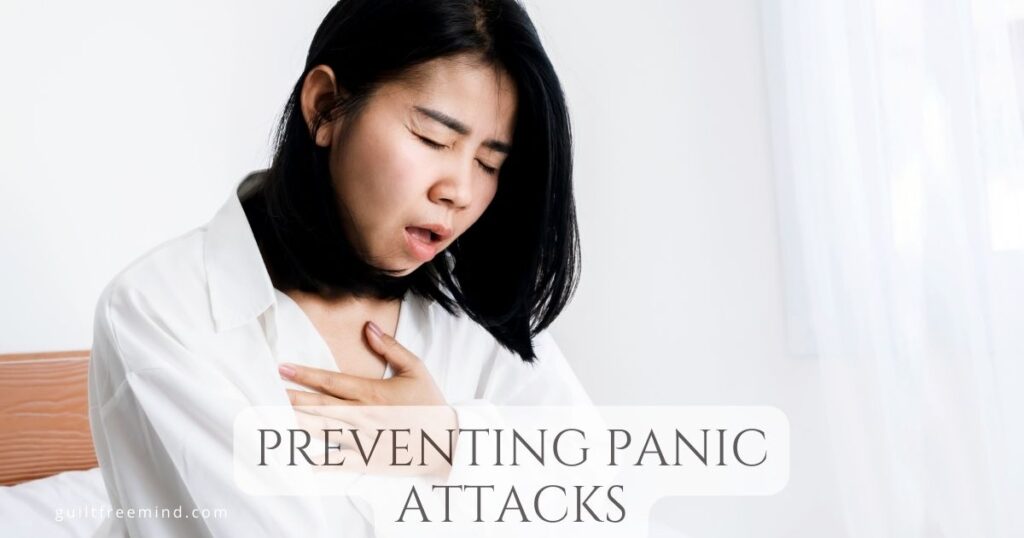
If you wish to lead a more positive and meaningful life, please subscribe to the Guilt Free mind. The subscription option is present in the sidebar. If you like watching videos, subscribe to the YouTube channel of Guilt Free Mind. Remember to set the notification bell to ALL. One final thing, you are not alone in this journey, reach out to those who can help you and get the support you need. You deserve a better life and you should work towards it.
See you in my next blog post
Dr Shruti
Frequently Asked Questions
Anxiety is a persistent state of worry, while panic attacks are abrupt, severe experiences of terror with physical symptoms including rapid heartbeat and shortness of breath.
Anxiety is a normal response to stress, but panic episodes are quick and extremely frightening. Extreme somatic symptoms characterize a panic attack.
There is a wide variety of potential stressors that can set off a bout of anxiety. Immediate causes of panic include things like preexisting phobias or extreme amounts of stress.
Panic attacks and anxiety are related, but not the same. It’s also possible to have a panic attack without ever having anxiety.
Therapy, medicine, or a combination of the two may be used as treatment. If you want a proper diagnosis and tailored treatment plan, see a doctor.

1 Comment
A Wonderfully Detailed on the topiccs for sure.